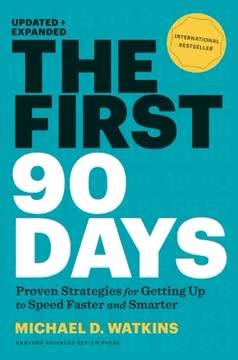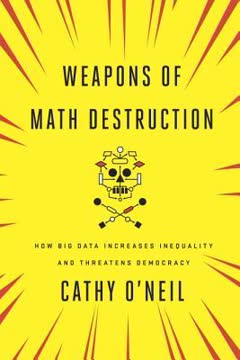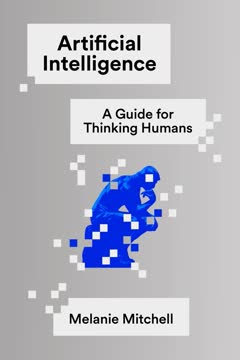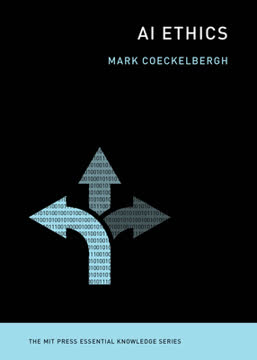重点摘要
1. 人工智能的基础在于通过机器模仿人类智能
“人工智能将是谷歌的*终版本。*终的搜索引擎将理解网络上的一切。它会准确理解你的需求,并给你正确的答案。”
历史背景。 人工智能的根源可以追溯到20世纪50年代,艾伦·图灵、约翰·麦卡锡和马文·明斯基等先驱奠定了基础。该领域经历了兴奋和“人工智能寒冬”的周期,但最近计算能力和数据可用性的进步将人工智能推向了主流。
关键概念。 人工智能涵盖多个子领域:
- 机器学习
- 深度学习
- 自然语言处理
- 计算机视觉
- 机器人技术
*终目标是创造能够执行需要人类智能的任务的机器,如推理、解决问题和学习。
2. 数据质量和准备对于成功实施人工智能至关重要
“数据是人工智能的生命线。算法通过数据发现模式和关联,从而提供洞见。”
垃圾进,垃圾出。 人工智能模型的成功很大程度上取决于用于训练的数据的质量和数量。劣质数据可能导致偏见或不准确的结果,破坏整个人工智能计划。
数据准备的关键步骤:
- 从各种来源收集数据
- 数据清洗和标准化
- 特征选择和工程
- 数据标注(用于监督学习)
- 数据增强(必要时)
组织必须在数据准备上投入大量时间和资源,以确保其人工智能项目有坚实的基础。
3. 机器学习使计算机能够在没有明确编程的情况下学习
“机器学习是关于优化过程,并涉及大量数据。”
机器学习的类型。 主要有三类:
- 监督学习:使用标注数据训练模型
- 无监督学习:在未标注数据中发现模式
- 强化学习:通过试错学习
常见算法。 机器学习涵盖多种技术:
- 线性回归
- 逻辑回归
- 决策树
- 随机森林
- 支持向量机(SVM)
- K-近邻(KNN)
这些算法可以应用于各种问题,从预测客户流失到检测欺诈交易。
4. 深度学习通过受人脑启发的神经网络革新人工智能
“深度学习人工智能是新的电力。”
神经网络。 深度学习使用具有多层的人工神经网络来处理复杂数据。这种方法在以下领域取得了突破:
- 图像和语音识别
- 自然语言处理
- 自动驾驶汽车
- 游戏AI(如AlphaGo)
关键架构。 深度学习涵盖各种神经网络结构:
- 卷积神经网络(CNN)用于图像处理
- 循环神经网络(RNN)用于序列数据
- 生成对抗网络(GAN)用于创建新数据
尽管强大,深度学习需要大量计算资源和大数据集才能达到*佳效果。
5. 机器人流程自动化(RPA)为人工智能采用提供了一个可行的切入点
“RPA允许你使用低代码的可视化拖放系统来自动化流程。”
业务收益。 RPA可以:
- 通过自动化重复任务降低成本
- 提高准确性和一致性
- 解放人类工人从事更有价值的活动
- 通过更快的处理提高客户满意度
实施考虑。 采用RPA时:
- 从简单的规则基础流程开始
- 确保IT和业务部门的支持
- 建立明确的治理结构
- 计划可扩展性和维护
RPA作为更高级人工智能应用的垫脚石,使组织在处理更复杂项目之前获得自动化经验。
6. 自然语言处理(NLP)推动人机交流
“NLP是使用人工智能使计算机理解人类。”
关键应用。 NLP使得:
- 聊天机器人和虚拟助手
- 机器翻译
- 情感分析
- 文本摘要
- 语音识别
挑战。 NLP必须克服:
- 语言的歧义
- 依赖上下文的意义
- 讽刺和习语
- 多种语言和方言
深度学习的最新进展,特别是像BERT和GPT这样的变压器模型,显著提高了NLP能力,使语言理解和生成更加自然和上下文相关。
7. 物理机器人是人工智能在现实世界中的*终体现
“机器人可以有各种尺寸,从可以探索我们身体的小型机器到大型工业系统,再到飞行机器和水下船只。”
机器人的类型。 该领域涵盖多种类别:
- 用于制造的工业机器人
- 用于清洁或客户服务的服务机器人
- 用于手术和病人护理的医疗机器人
- 自动驾驶汽车
- 无人机和无人驾驶飞行器(UAV)
人工智能集成。 机器人越来越多地集成人工智能以:
- 感知和导航环境
- 做出决策并适应变化的条件
- 安全地与人类互动
- 学习并提高其性能
随着人工智能的进步,机器人变得更加多功能、自主,并能够在复杂、非结构化的环境中操作。
8. 实施人工智能需要战略规划和跨职能协作
“企业领导者需要理解并意识到,采用人工智能是一段旅程,而不是短跑。”
人工智能实施的关键步骤:
- 确定高影响力的用例
- 评估数据准备情况和基础设施
- 建立跨职能团队
- 选择合适的工具和平台
- 开发和测试人工智能模型
- 部署和监控解决方案
- 持续迭代和改进
常见挑战:
- 缺乏人工智能专业知识
- 数据质量和可用性问题
- 与遗留系统的集成
- 伦理问题和偏见
- 抵制变革
成功的人工智能采用需要一种全面的方法,考虑技术、人员和流程。
9. 人工智能的未来既充满巨大潜力也面临重大挑战
“不负责任地执行人工智能有可能通过导致许多人担心的劳动力缩减、中产阶级购买力下降以及由无尽债务螺旋推动的没有广泛稳定基础的经济,来破坏世界经济的大部分。”
潜在收益。 人工智能可以:
- 通过个性化医疗和早期疾病检测革新医疗
- 通过自适应学习系统提升教育
- 通过优化能源使用和资源管理应对气候变化
- 通过自动驾驶汽车改善交通
伦理问题。 我们必须解决:
- 工作流失和经济不平等
- 隐私和数据安全
- 算法偏见和公平性
- 人工智能安全和控制
随着人工智能的不断进步,社会必须应对其影响,并努力确保技术的开发和部署负责任地进行,*大化其收益,同时减轻潜在风险。
最后更新日期:
FAQ
What's "Artificial Intelligence Basics: A Non-Technical Introduction" about?
- Overview: "Artificial Intelligence Basics" by Tom Taulli provides a comprehensive introduction to AI without delving into technical complexities. It covers the history, current applications, and future potential of AI.
- Target Audience: The book is designed for non-technical readers who want to understand AI's impact on various industries and society.
- Content Structure: It includes chapters on AI foundations, data, machine learning, deep learning, robotic process automation, natural language processing, and physical robots.
- Real-World Examples: The book uses case studies and examples to illustrate how AI is being implemented in businesses and everyday life.
Why should I read "Artificial Intelligence Basics: A Non-Technical Introduction"?
- Demystifies AI: The book breaks down complex AI concepts into understandable terms, making it accessible to those without a technical background.
- Broad Coverage: It covers a wide range of AI topics, from foundational concepts to specific applications like NLP and robotics.
- Practical Insights: Readers gain insights into how AI can be applied in various industries, offering practical advice for businesses considering AI adoption.
- Future-Oriented: The book discusses the future of AI, including potential challenges and opportunities, helping readers prepare for upcoming changes.
What are the key takeaways of "Artificial Intelligence Basics: A Non-Technical Introduction"?
- AI's Transformative Power: AI is set to revolutionize industries by automating tasks, improving decision-making, and creating new opportunities.
- Importance of Data: Data is the lifeblood of AI, and understanding how to manage and utilize it is crucial for successful AI implementation.
- Machine Learning and Deep Learning: These are key components of AI, with deep learning offering advanced capabilities through neural networks.
- Ethical Considerations: The book emphasizes the importance of addressing ethical issues, such as bias and privacy, in AI development.
What are the best quotes from "Artificial Intelligence Basics: A Non-Technical Introduction" and what do they mean?
- AI as a Democratizing Force: The foreword suggests that AI, if handled correctly, can democratize access to technology and improve quality of life.
- AI's Historic Impact: The book compares AI's potential impact to that of the steam engine and the internet, highlighting its transformative power.
- Cautionary Notes: Quotes from experts like Stephen Hawking and Elon Musk are used to illustrate the potential risks and ethical concerns associated with AI.
- Optimism and Innovation: The book includes quotes from AI pioneers who express optimism about AI's ability to solve complex problems and drive innovation.
How does Tom Taulli explain the history of AI in "Artificial Intelligence Basics"?
- Early Beginnings: The book traces AI's roots back to the 1950s, highlighting key figures like Alan Turing and John McCarthy.
- Golden Age and AI Winter: It discusses the initial excitement and subsequent disillusionment during the AI winter, when progress stalled.
- Recent Resurgence: The book covers the resurgence of AI in the 21st century, driven by advances in computing power and data availability.
- Key Innovations: It highlights significant breakthroughs, such as machine learning and deep learning, that have propelled AI forward.
What is the role of data in AI according to "Artificial Intelligence Basics"?
- Foundation of AI: Data is essential for training AI models, enabling them to learn and make predictions.
- Types of Data: The book explains different types of data, including structured, unstructured, and semi-structured, and their relevance to AI.
- Data Challenges: It addresses challenges like data quality, bias, and the need for large datasets to train effective AI models.
- Big Data and AI: The book discusses how big data technologies have facilitated the growth and application of AI across industries.
How does "Artificial Intelligence Basics" describe machine learning and its applications?
- Definition and Process: Machine learning is defined as a method where computers learn from data without explicit programming, using algorithms to identify patterns.
- Applications: The book covers various applications, such as predictive maintenance, customer experience enhancement, and fraud detection.
- Algorithm Types: It explains different types of machine learning algorithms, including supervised, unsupervised, and reinforcement learning.
- Real-World Examples: Case studies illustrate how companies like Stitch Fix and Kroger use machine learning to improve operations and customer satisfaction.
What insights does "Artificial Intelligence Basics" provide on deep learning?
- Advanced AI: Deep learning is a subset of machine learning that uses neural networks to process large amounts of data and identify complex patterns.
- Neural Networks: The book explains how neural networks mimic the human brain, with layers of nodes that process information.
- Breakthroughs: It highlights key breakthroughs in deep learning, such as convolutional neural networks (CNNs) and generative adversarial networks (GANs).
- Applications: Deep learning is used in areas like image recognition, natural language processing, and autonomous vehicles.
How does "Artificial Intelligence Basics" address the ethical considerations of AI?
- Bias and Fairness: The book discusses the risk of bias in AI models and the importance of ensuring fairness and transparency.
- Privacy Concerns: It highlights the need to protect user data and maintain privacy in AI applications.
- Ethical Frameworks: The book suggests the establishment of ethics boards and guidelines to govern AI development and deployment.
- Long-Term Implications: It considers the potential societal impacts of AI, such as job displacement and the need for regulatory oversight.
What does "Artificial Intelligence Basics" say about the future of AI?
- Continued Growth: The book predicts that AI will continue to grow and evolve, impacting more industries and aspects of daily life.
- Potential Challenges: It acknowledges potential challenges, such as ethical dilemmas, regulatory hurdles, and technological unemployment.
- Opportunities for Innovation: AI is seen as a driver of innovation, with the potential to solve complex global issues like climate change and healthcare.
- Need for Adaptation: The book emphasizes the need for individuals and organizations to adapt to the changes brought by AI, through education and strategic planning.
How does "Artificial Intelligence Basics" explain the concept of Robotic Process Automation (RPA)?
- Definition and Purpose: RPA is described as software that automates routine tasks, mimicking human actions to improve efficiency.
- Business Benefits: The book highlights benefits such as cost savings, increased accuracy, and improved compliance in business processes.
- AI Integration: It discusses how AI can enhance RPA, leading to more intelligent and adaptable automation solutions.
- Implementation Challenges: The book addresses potential challenges in RPA implementation, such as process brittleness and employee resistance.
What are the practical steps for implementing AI in a business, according to "Artificial Intelligence Basics"?
- Identify Opportunities: The book advises identifying areas where AI can add value, such as improving decision-making or automating tasks.
- Build a Strong Team: It emphasizes the importance of assembling a team with diverse skills, including technical, business, and domain expertise.
- Select the Right Tools: The book suggests choosing appropriate AI tools and platforms, such as TensorFlow and Python, based on business needs.
- Monitor and Adapt: It highlights the need for ongoing monitoring and adaptation of AI models to ensure they remain effective and aligned with business goals.
评论
《人工智能基础》获得了褒贬不一的评价,平均评分为3.55/5。读者们欣赏其对人工智能的非技术性介绍,涵盖了历史、现状和未来潜力。该书因提供了扎实的背景知识和通用词汇而受到赞扬。有些人认为内容过于基础,而另一些人则看重其易于理解的特点。批评意见包括信息过时、写作粗心和深度不足。读者们特别提到书中对机器学习、深度学习和人工智能应用的介绍,尽管有些人希望看到更多具体的例子和深入的解释。
Similar Books















